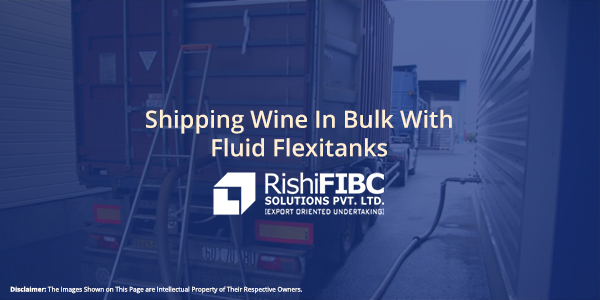Fluid Flexitanks for Wine Transport while Shipping
Wine is one of the most precious, and equally as delicate, products to transport. It needs thorough care in packaging and constant monitoring en route to make sure that it reaches its final owner just as the winemaker desired it to!
No matter how logistically challenging it is to take wine across shores, the market for imported wines from distant lands has remained strong for more than a century. The methods of transportation, however, have evolved and there is now a tremendous shift towards using flexitanks for wine transport. Flexitanks are being preferred as these allow transporting wine in the best state and lowest costs possible.
Let’s take a look at the three types of wine transportation.
Bottle Transport
To give the wine a safe, uneventful journey, transporters chose to ship bottled wines instead of in bulk containers. Although bottle transportation made it fairly easy to ensure that no contamination occurred on the way and that the wine was ready to into the racks right after reaching the final shore, shipping was a considerably expensive process.
Why Bottle Transport?
Because the weight of the bottles themselves made a substantial chunk of cargo. In addition, the bottles were prone to breakage and needed additional packaging material to prevent it. The weight and volume of the bottles restricted the amount of wine that could be transported per ship.
To make good these shortcomings of the bottle transport method, the industry has been radically shifting to bulk transport instead of shipping bottles.
Bulk transport method is of two types depending on the type of container used.
- ISO Tanks
ISO tanks are hollow steel tanks. They can be put directly on a train, truck or ship and are reusable. Besides wine, ISO tanks are also used for transporting other materials. A typical ISO tank has a capacity of holding up to 26,000 liters of wine.
- Flexitanks
Using flexitanks for wine transport is the latest and most preferred method among manufacturers. Flexitanks are usually disposable, flexible bags that are put into standard shipping containers for transportation.
Flexitanks for wine transport facilitates the transportation of almost three times as much wine as bottle transport. While a standard shipping container holds about 12,000 wine bottles, a flexitank holds the equivalent of 32,000 wine bottles. This makes it a much more ecologically conscious transportation method than bottle transport, in addition to bringing about a dramatic cost reduction. And the biggest advantage of flexitanks over ISO tanks for wine transport is that the contamination risk is significantly lower in the former.
Take a look at the advantages: https://fluidflexitanks.com/advantages-of-shipping-with-flexitanks/
The typical volume of a flexitank is about 25,000 liters. They are safe to transport via ship, train or truck. A reliably manufactured flexitank is nearly 100% effective in preventing oxidation, thereby preventing premature ageing of wine.
The most common material used for making flexitanks in the current day is polyethylene with ethylene vinyl alcohol (EVOH) used as a barrier material. EVOH keeps the wine from getting in contact with any organic material thereby preserving its original color.
Read more: Why Flexitanks for Transporting Liquids?
Fluid flexitanks are undoubtedly the winner of the wine logistics industry. They have an excellent capacity, offer superior protection against oxidation and contamination and can easily be loaded and unloaded from one medium of transport to another. Rishi FIBC fluid flexitanks have a fine construction, undergo strict quality checks and are the most trusted in the industry for wine transportation.



